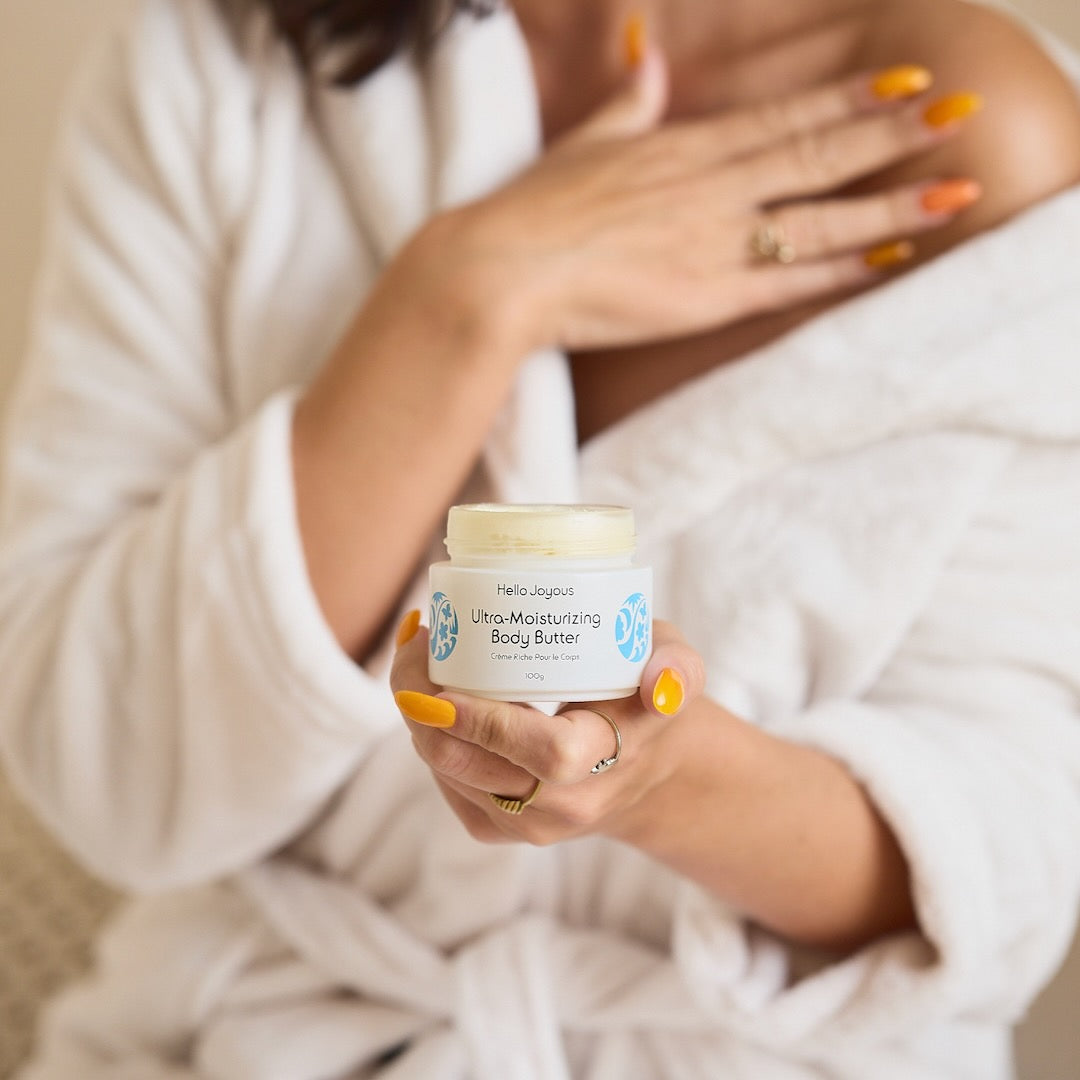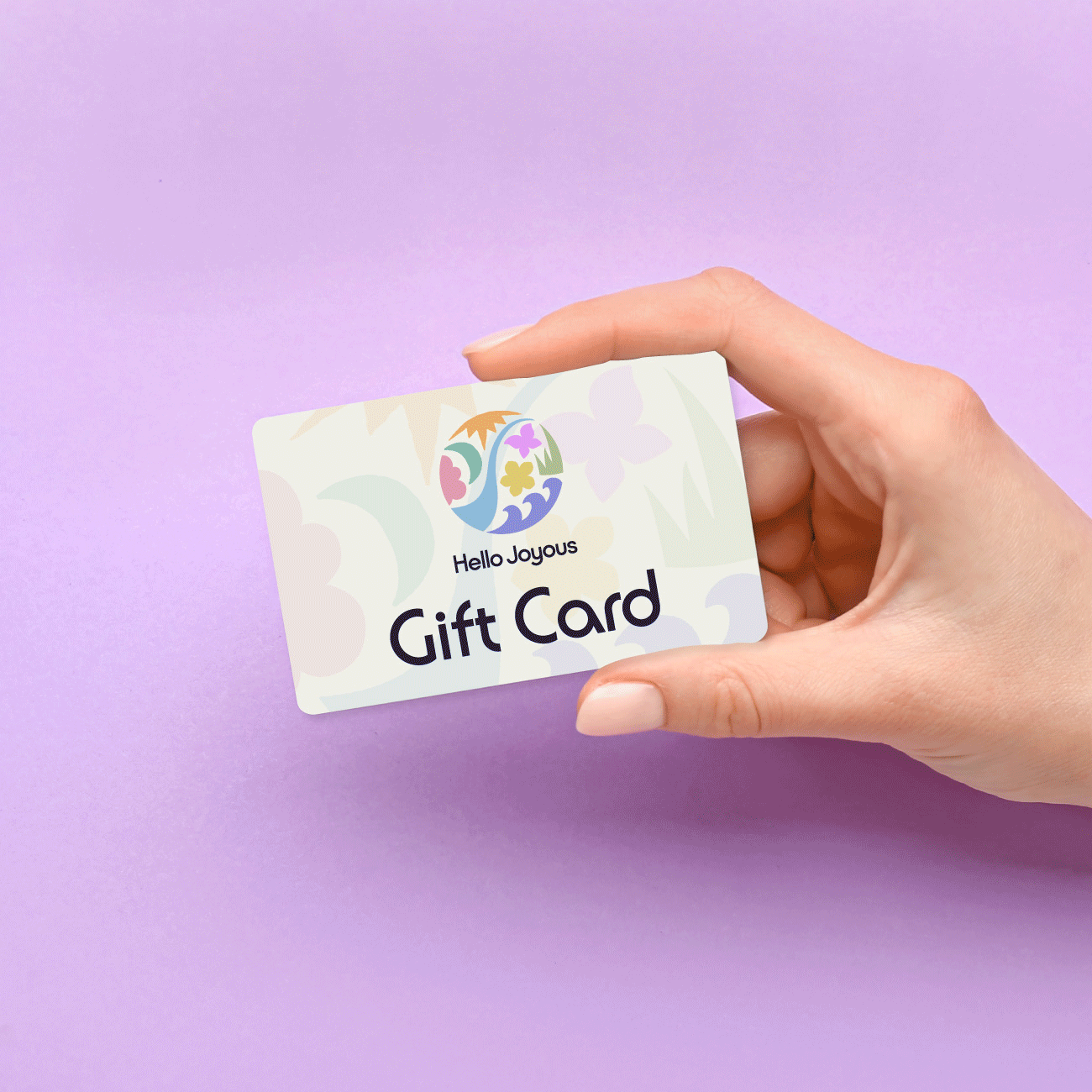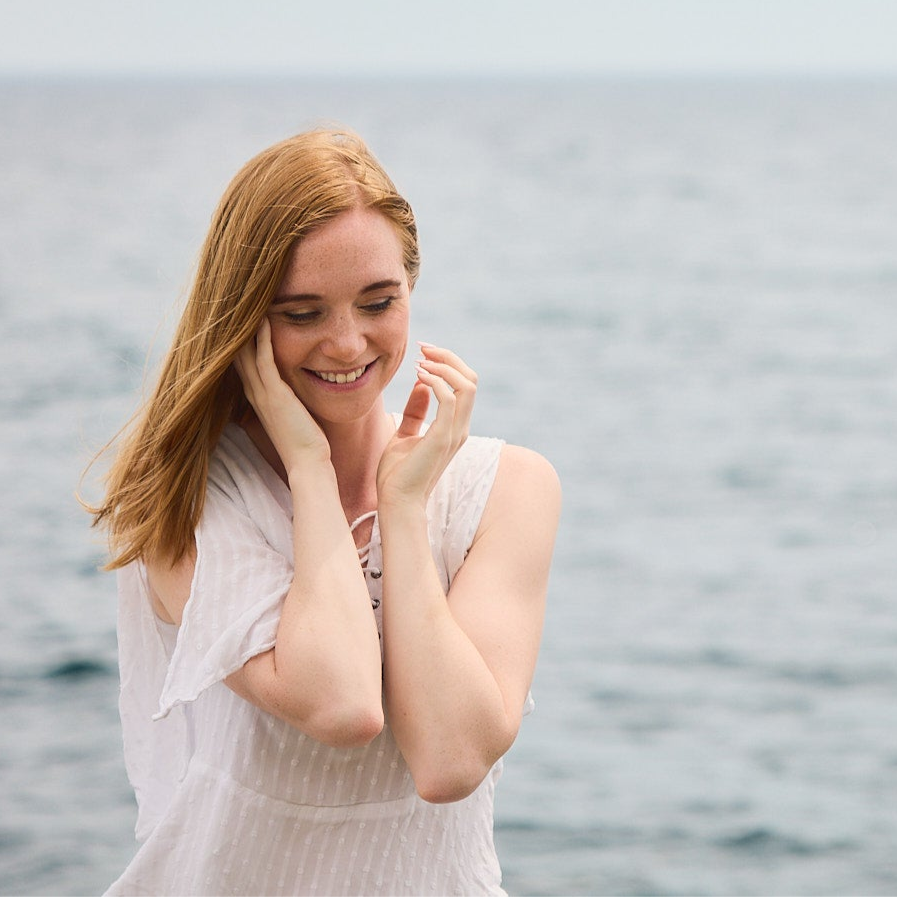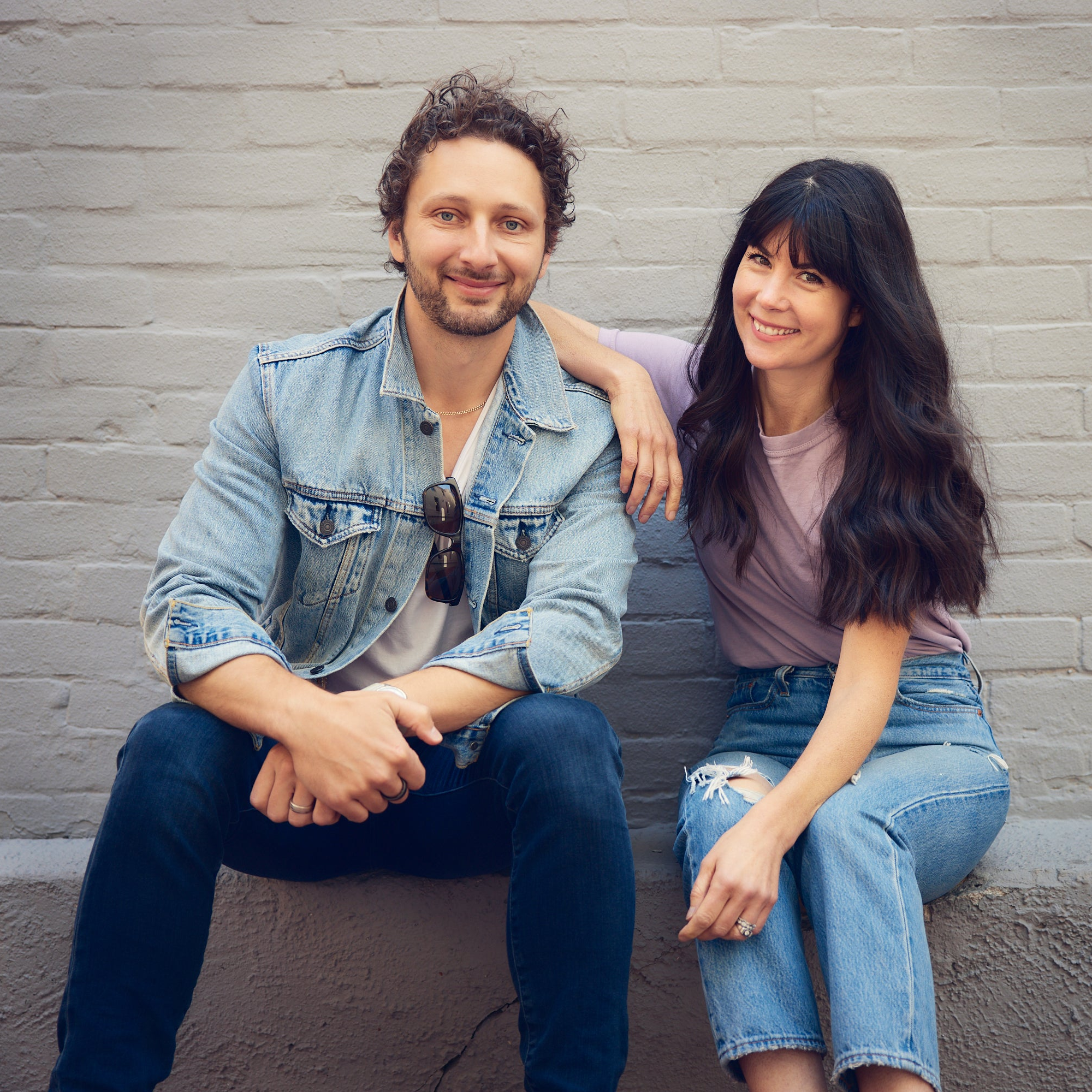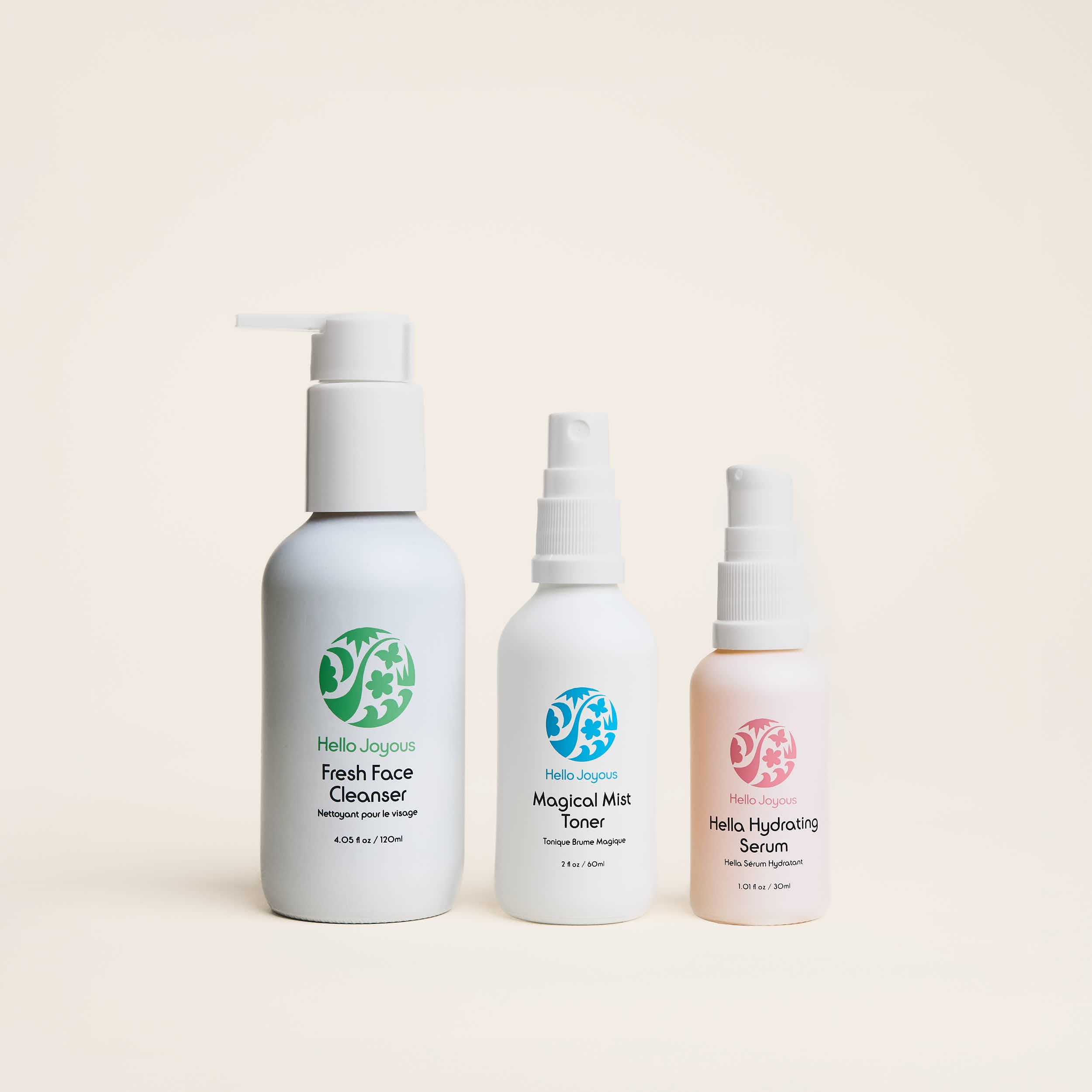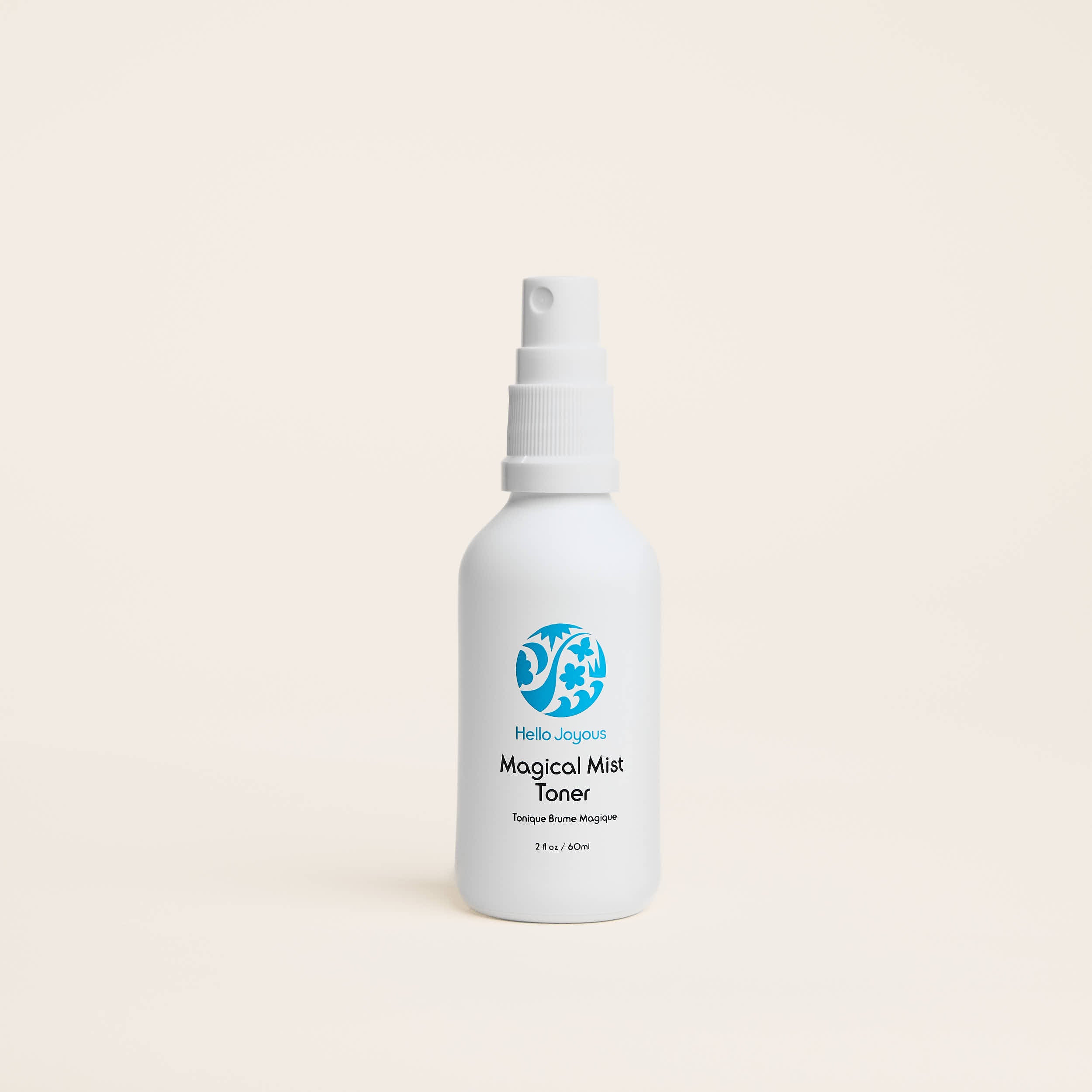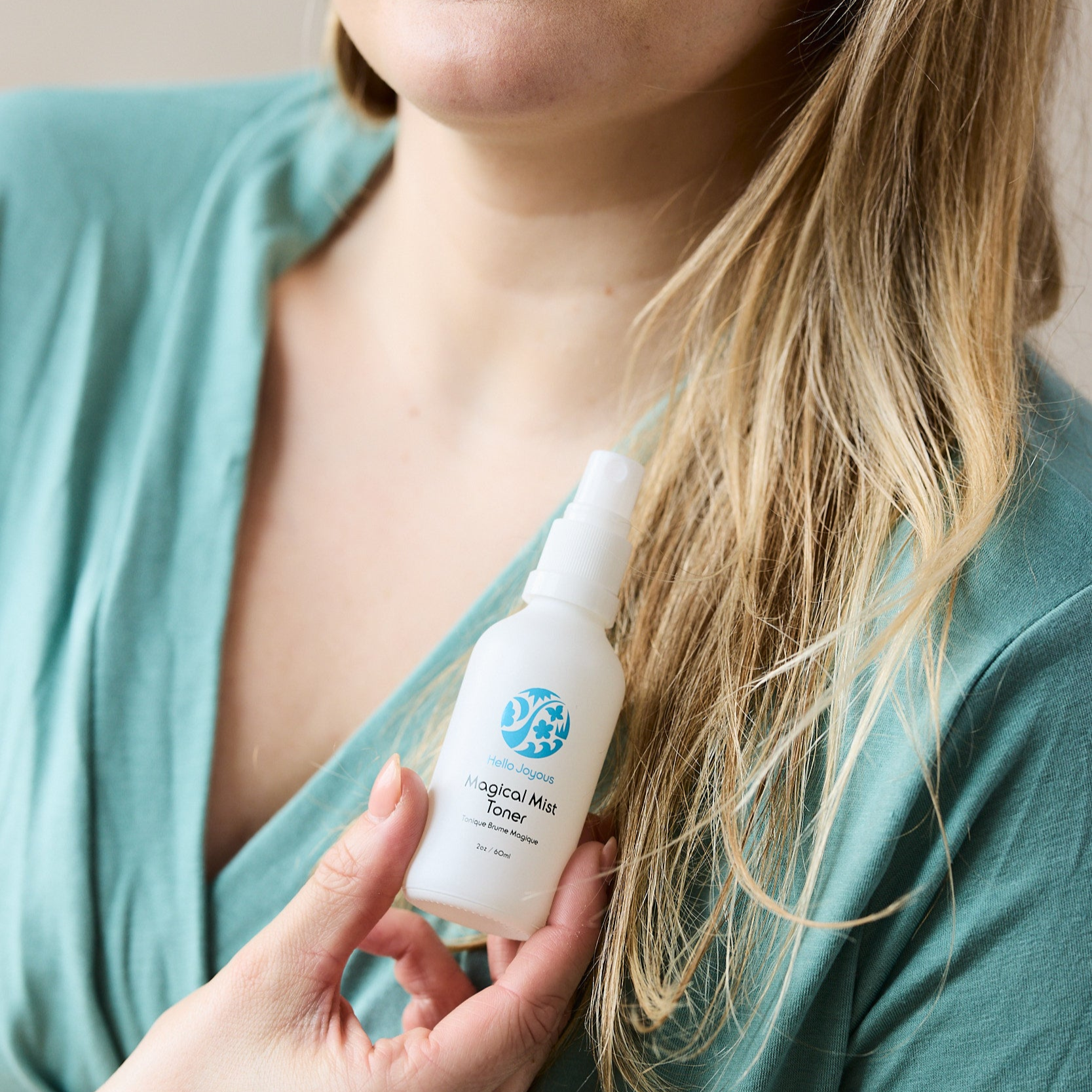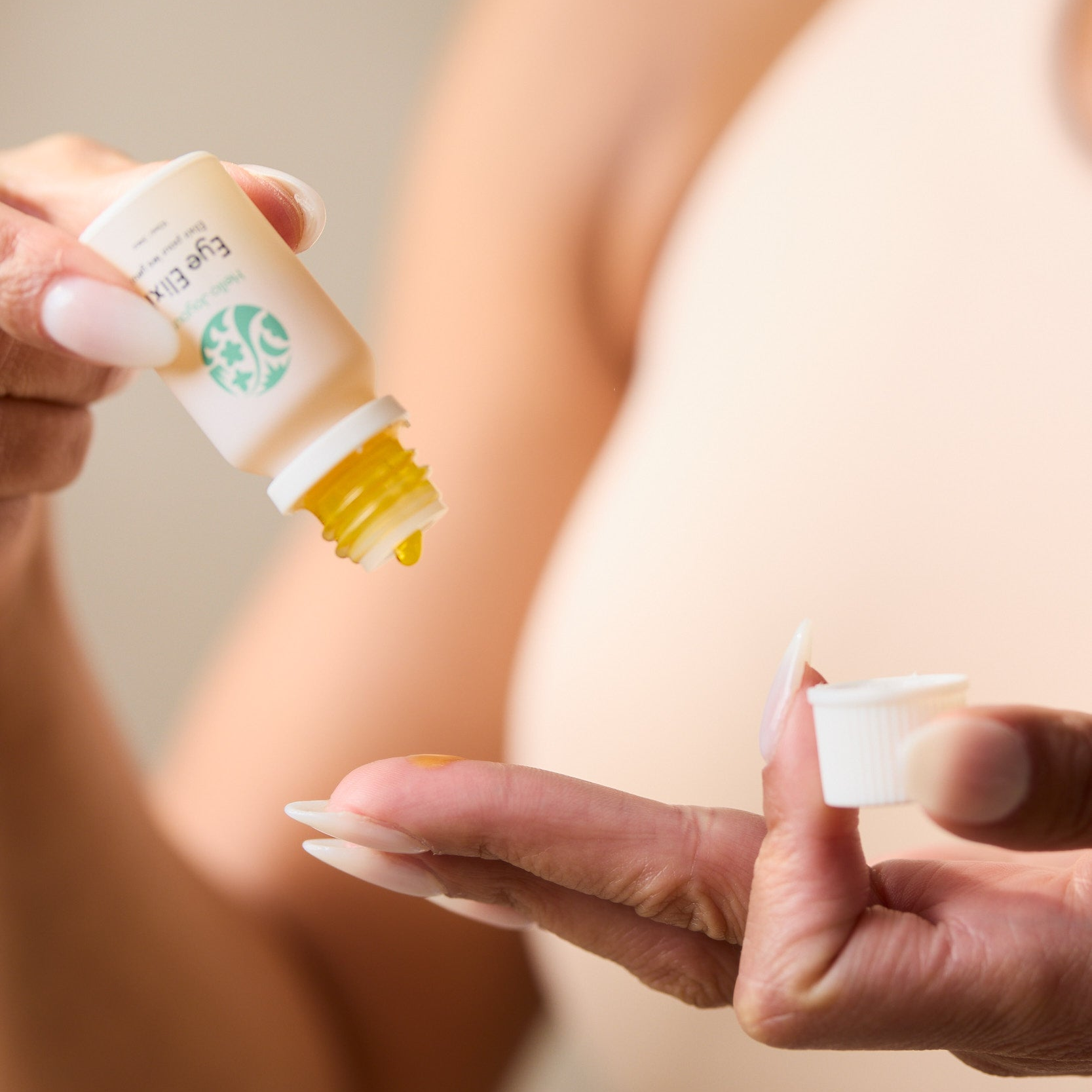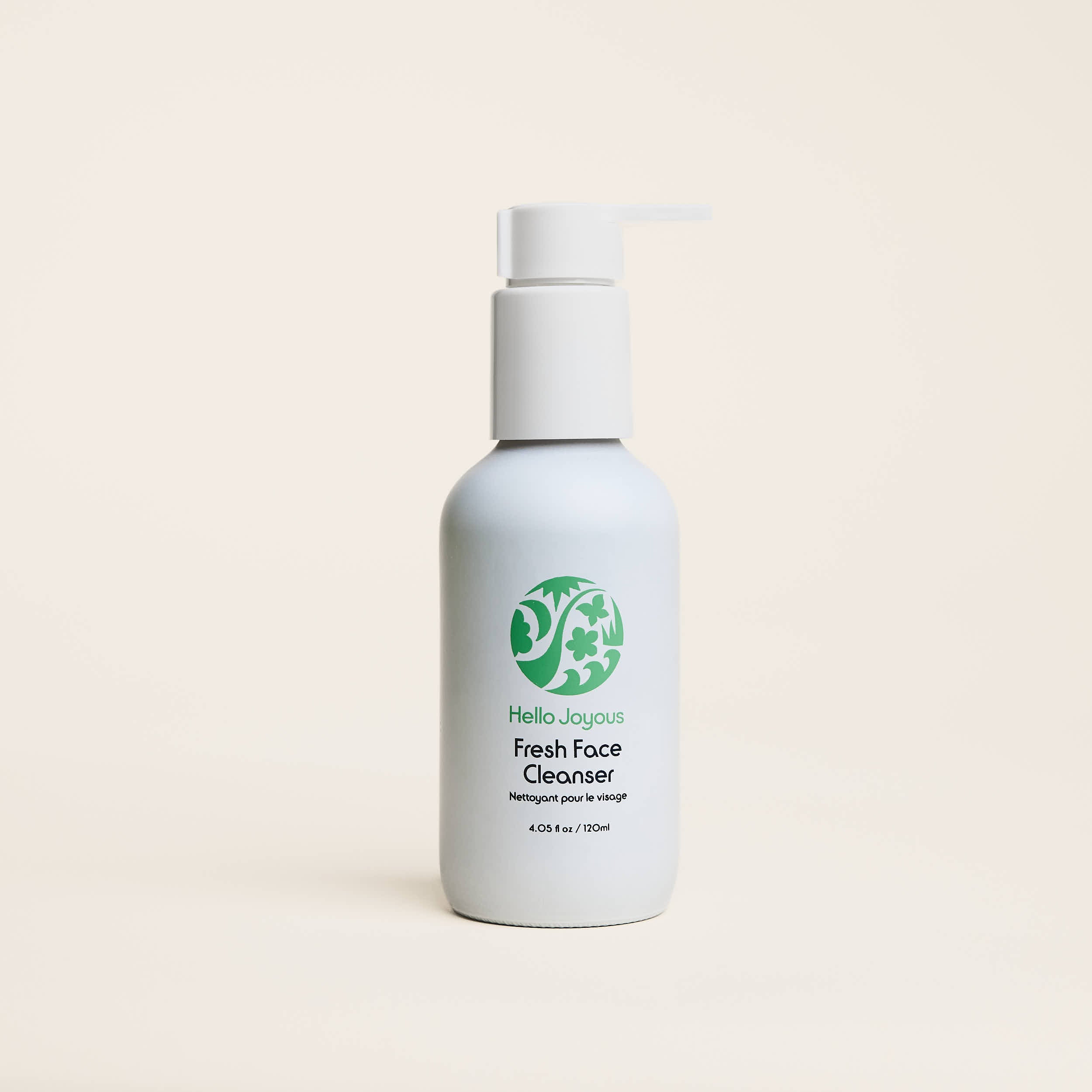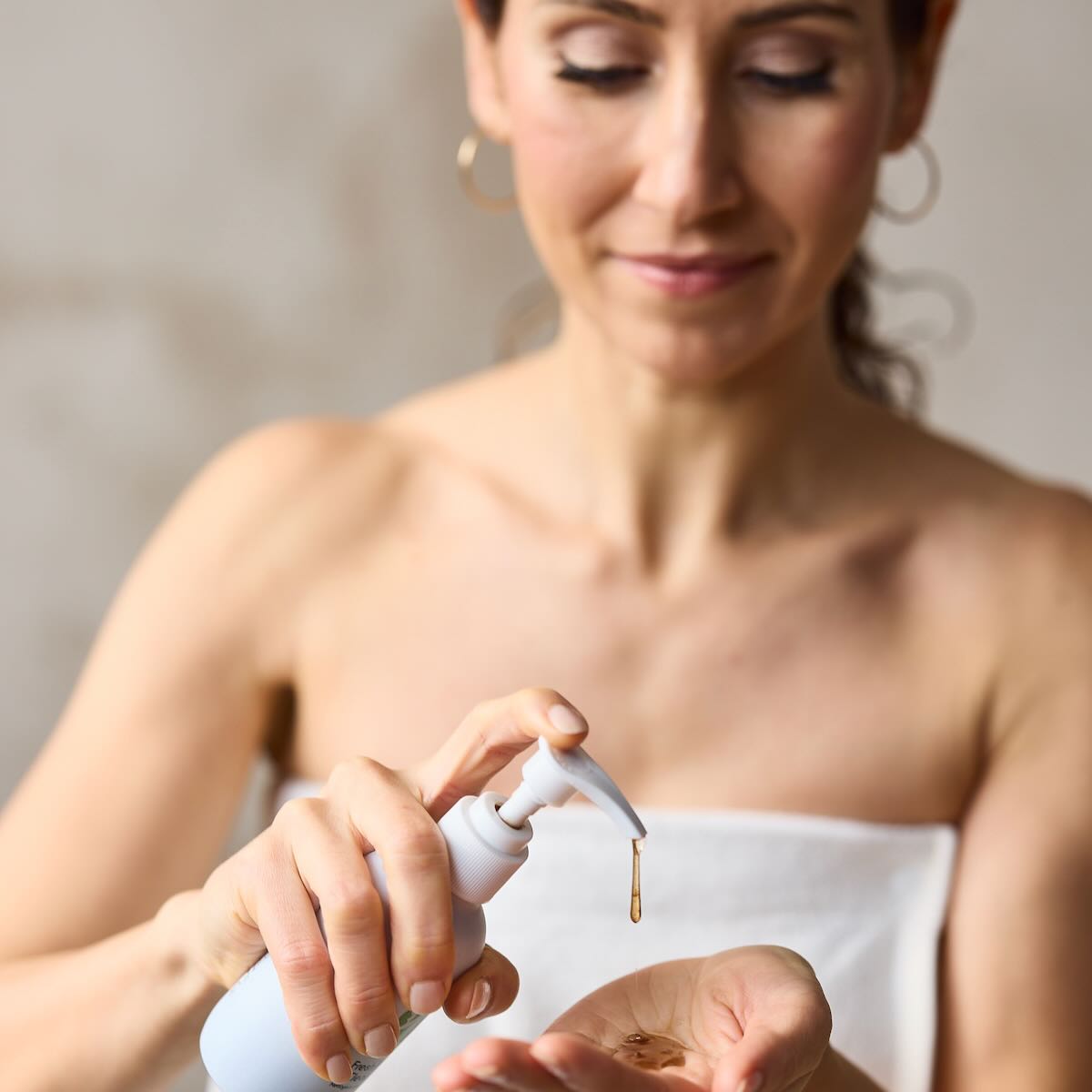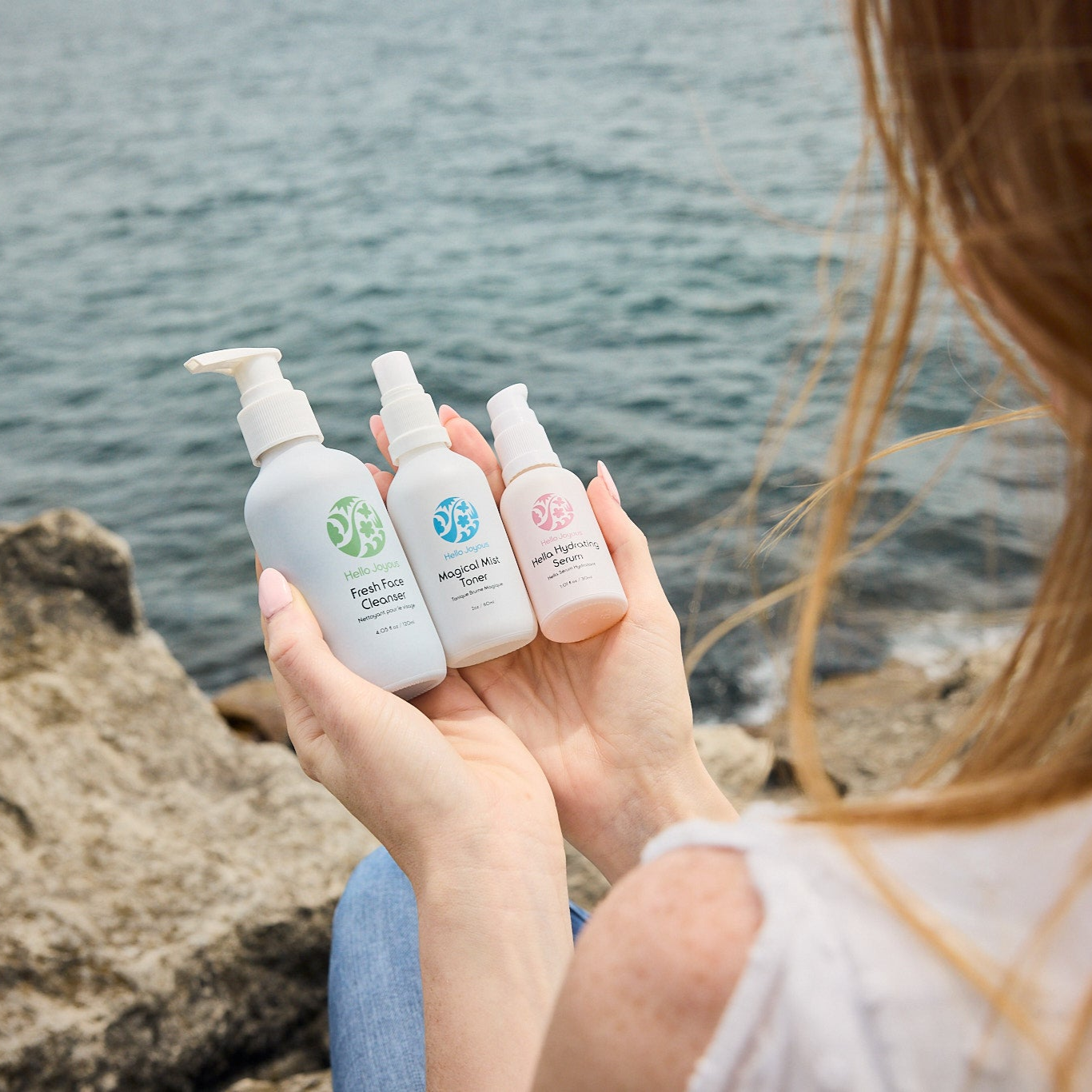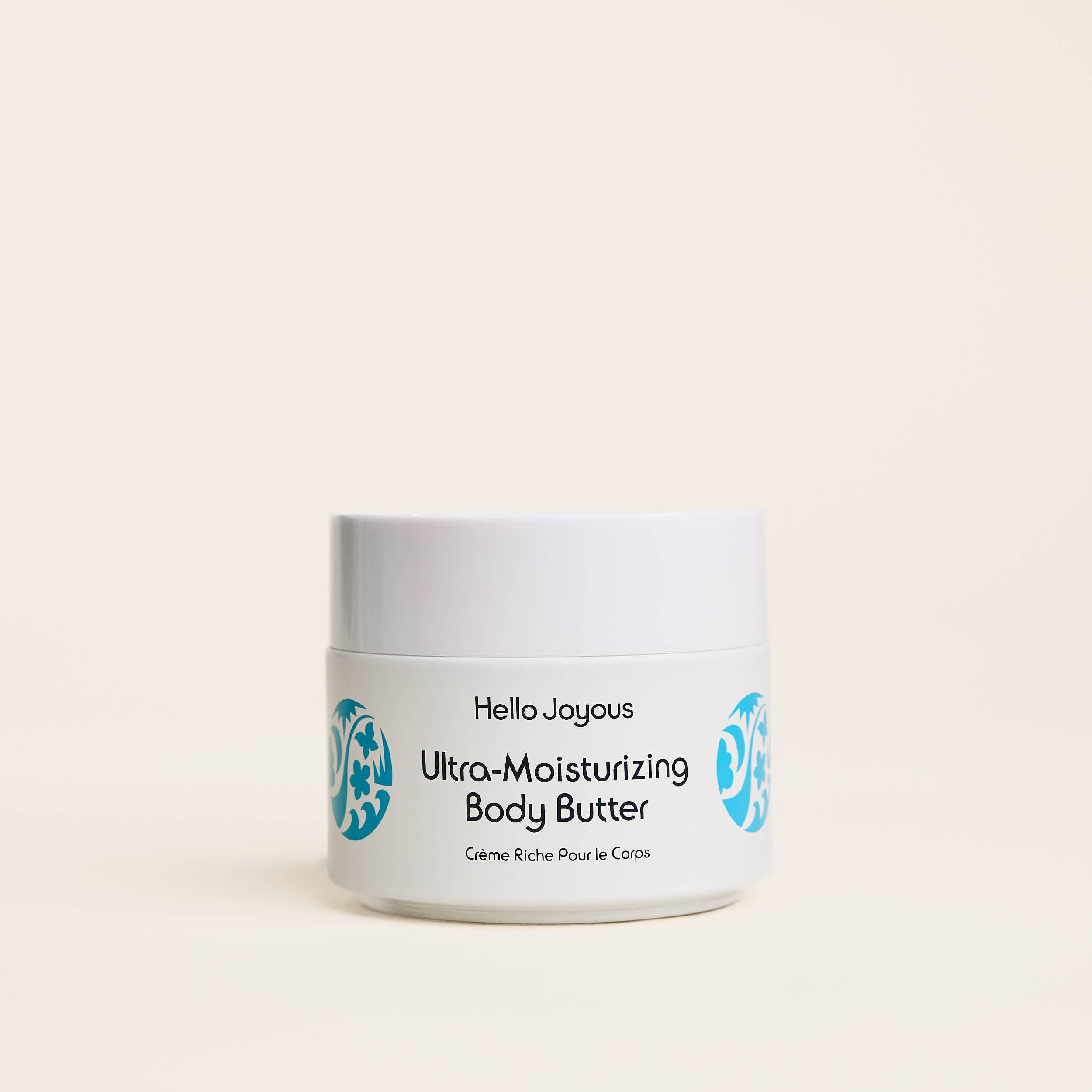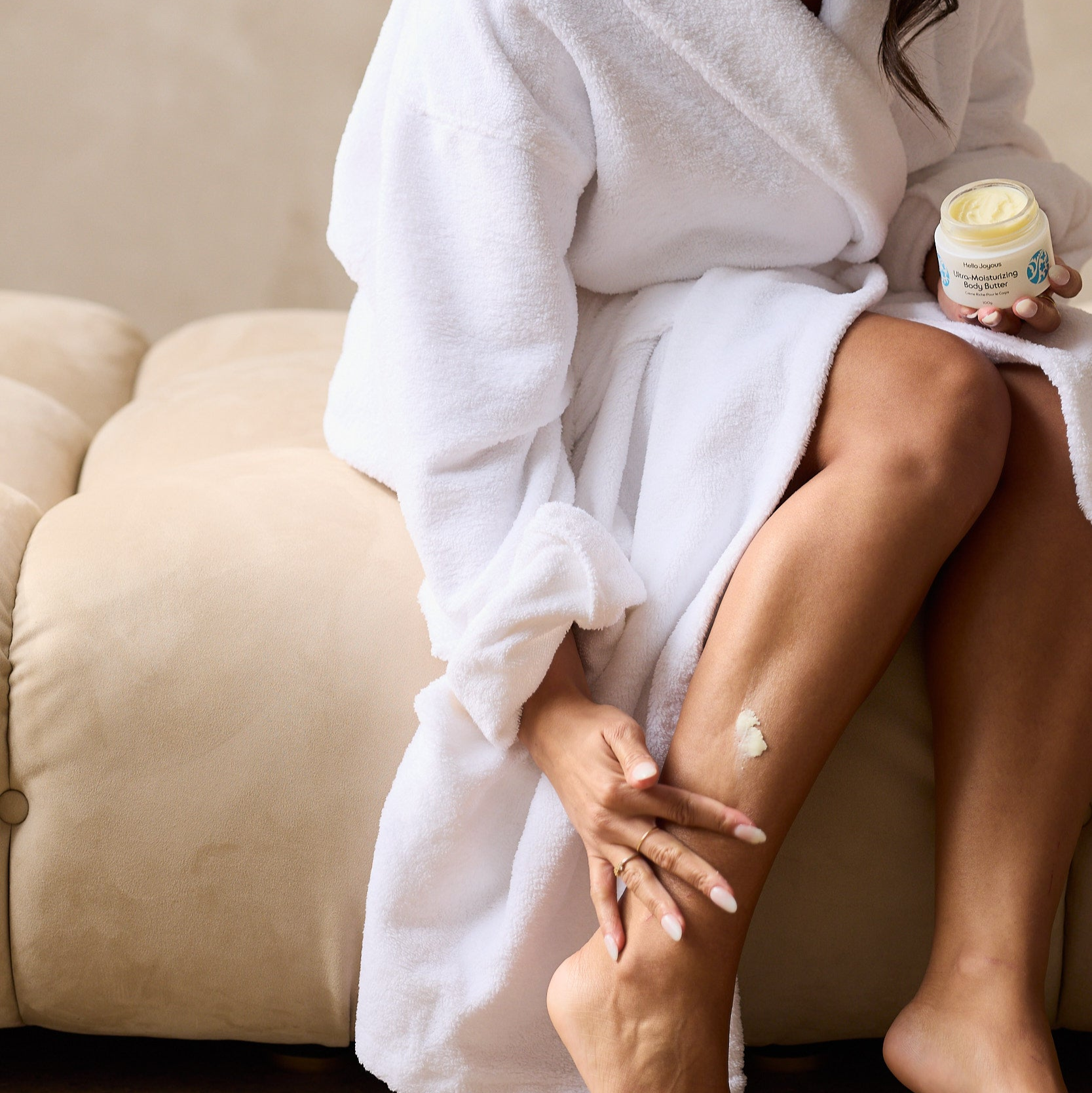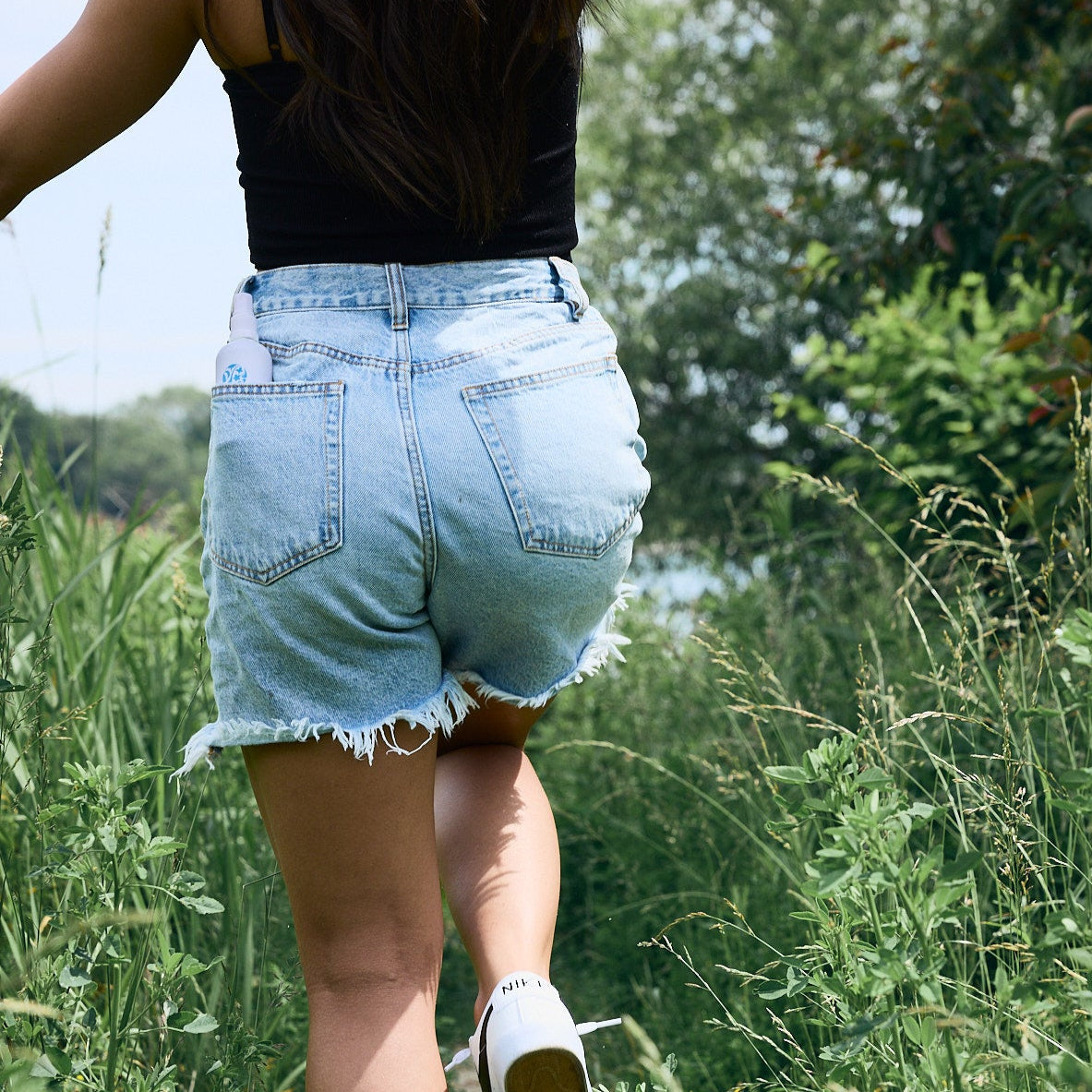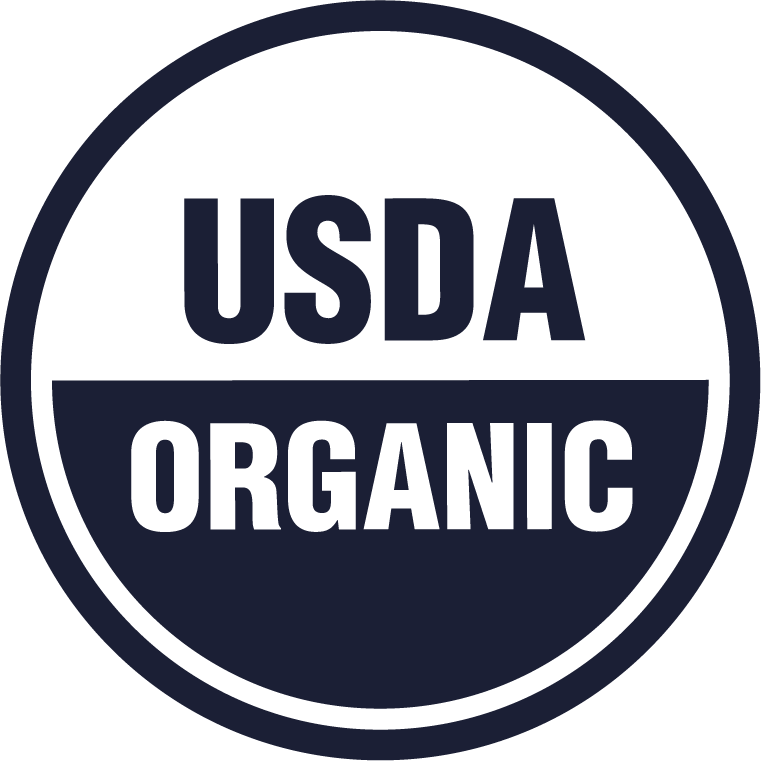At Hello Joyous clean beauty is more than just a passing trend or buzz word; it is the belief that guides everything from our product development to packaging. We love highlighting the benefits of our organic, plant-powered ingredients like cold-pressed rosehip oil and golden jojoba. But what we leave out of our products is just as important as what we include. That’s why you won’t find any phthalates, silicones, or other harsh chemicals or preservatives in a single one of our products.
This week we want to highlight a commonly used preservative in beauty and personal care products: formaldehyde-releasing preservatives or FRPs for short. Below, we’ll outline everything you need to know about formaldehyde-releasing preservatives, including what they are, how they’re used, possible negative health impacts, and the simple swaps you can make to clean your beauty routine!
What’s The Deal with Formaldehyde-Releasing Preservatives?
Technically, formaldehyde is a naturally occurring gas that you likely associate with embalming, though it is also used in the production of fertilizers, paper, some plastic products, and plywood. There are naturally occurring levels of formaldehyde in the environment; however, industrial production creates more than 21 million tons a YEAR of formaldehyde!
Fortunately, it is incredibly rare that cosmetic and beauty products contain pure formaldehyde since it is a very well-known contact allergen, affecting up to 8-9% of the population. However, many preservatives used in the beauty industry slowly release formaldehyde when in the presence of water such as in shampoos, liquid foundations, and anti-wrinkle creams. Hence the name: formaldehyde-releasing preservatives.
The EWG found that approximately 20% of beauty and cosmetic products contain FRPs–that’s no small amount!
Just because FRPs are used as preservatives in many beauty and personal care products from hair care to nail polishes doesn’t mean they’re safe or good for your glow. One reason we are committed to creating products that contain clean, safe ingredients is because The American Journal of Public Health found that the skin can absorb between 64% and 100% of the chemicals in your skincare products. The amount that gets absorbed depends on whether you have any broken skin, the size of the molecule, or if you have compromised skin barrier function, an imbalanced skin microbiome and/or skin pH.
Unfortunately for consumers, there is a lack of data and information on the health effects of beauty industry ingredients such as FRPs. This is because the industry is unregulated so manufacturers and companies can choose to add chemicals to their products based on cost and availability, as opposed to the potential side effects or possible harm.
How Are Formaldehyde-Releasing Preservatives Used in Skincare & Beauty Products?
When it comes to formulating beauty products, many companies are more focused on cutting costs and extending shelf-life, which is why the cheap price and widespread availability of FRPs are so attractive. They are used in everything from nail polish to body wash, cosmetics, shampoos and even in baby lotions and washes. FRPs are added to beauty products to extend their shelf life since they are known antimicrobials. The compounds break down slowly over time to release a consistent amount of formaldehyde into the product to kill off bacteria.
They’re cheap and long-lasting, which makes them attractive to manufacturers and many use them in place of parabens so they can call their product “paraben-free.”
Swapping one chemical for another is a great example of companies “health-washing.” They remove ingredients customers have learned about and want to avoid without actually making their products any safer. Replacing one chemical with another doesn’t make a product any healthier or safer for your skin. All it does is confuse customers and make it even harder to find products you can trust.
We also want to point out that even high end brands that claim to be natural may still use FRPs to increase product shelf life. Learning how to read labels and understanding the different names to watch for can help you become a savvy shopper and safeguard your skin against the effects of FRPs and other chemicals.
How to Spot Formaldehyde-Releasing Preservatives on Labels
There are many types of FRPs so learning their different names is one way to make sure that you’re purchasing products that are safe and healthy for you and the planet.
FRPs can often be found in beauty and personal care products.

By taking a few moments to check your labels you’ll be able to see whether your favourite beauty brands are all-natural and safe for sensitive skin, or possibly loaded with irritating formaldehyde-releasing preservatives. We pride ourselves on our transparency in our labeling and product formulas. Whether that’s our best-selling two ingredient Hella Hydrating Serum or carefully crafted Ultra-Moisturizing Body Butter, they’re all free from hormone-disrupting chemicals, harsh preservatives, or any other junk you don’t want on your skin with an easy-to-decipher ingredient list.
Why You Should Skip Formaldehyde-Releasing Preservatives
It’s likely no surprise that FRPs aren’t added to beauty and personal care products for any beauty benefits. They are added solely to help extend the shelf life by preventing the growth of bacteria in products with any water content.
We know what you’re probably thinking: But I want to prevent mold or bacteria growing in my skincare! Yes of course, but that’s why we've indicated on the package how long your product is good for once opened. Additionally, better quality ingredients that don’t contain a host of fillers (like water) don’t provide the perfect environment for bacteria to grow. That’s one reason you won’t find any fillers like water in a single Hello Joyous product. It’s a simple way to help extend shelf life AND increase the potency and efficacy of our pure, plant botanicals that form the base of every beauty product in our line.
There is only one reason that companies use these chemicals: profit. They want to make products that can last years on the shelf. Fortunately, there are more natural preservatives available which include grapefruit seed extract, essential oils like rosemary, vitamin E that prevents oils from going rancid, benzoic acid sourced from strawberries or cayenne), and more, but of course, they are more costly so most brands turn to the cheaper alternatives.
The David Suzuki Foundation also classifies FRPs as one of its Dirty Dozen Cosmetic Chemicals to Avoid. In fact, they have been banned from use in cosmetics and beauty products in both Sweden and Japan and the EU requires products that contain more than a 0.05% concentration have a label that states “contains formaldehyde.” While Canada does restrict the concentration of formaldehyde in cosmetics to 0.2%, there is no restriction on the amount of formaldehyde that can be released from the FRPs nor on the use of these ingredients themselves.
As we mentioned above, FRPs are well-known contact allergens. They are one of the most common allergens for children with contact dermatitis, which is frustrating because they are so often found in baby soaps and wipes.
Formaldehyde-releasing preservatives can:
- Cause contact dermatitis
- Cause skin irritation or redness
- Cause blisters and skin burns in severe cases
- Cause irritation to the eyes, nose, and throat
When it comes to other health effects, formaldehyde and FRPs:
- Are considered carcinogenic when inhaled
- Formaldehyde allergy can develop from repeated low-level exposure. For example, what you might be exposed to by using products that contain these chemicals every day.
It’s important to consider that even if the amount of formaldehyde is restricted within individual products, most of us are using more than one product daily. If FRPs are found in your body lotion, shampoo and conditioner, nail polish, cosmetics, and more then your exposure can add up over time and cause sensitivity. That’s why we suggest avoiding products that contain FRPs as much as possible. Your skin will thank you in the long run!
Shop Non-Toxic Skincare & Body Care

While natural products may not last quite as long without toxic chemical preservatives, we suggest buying fewer products and using what you have so you don’t let any products go to waste. That’s one reason we’re big proponents of Skinimalism! At Hello Joyous we’ve created products you can trust because we've eliminated all the unnecessary fillers, junk and harmful additives, have completely transparent labelling and we are determined to bring products that help you find more joy in the everyday.
Our products are made from concentrated botanical extracts rich in antioxidants from nature. There are no fillers like water, therefore no need for synthetic preservatives like FRPs. Instead of water, we use functional carriers for our organic botanicals like organic aloe and organic vegetable glycerin derived from coconut that keep the phytonutrients intact and stable.
Even our packaging is designed to decrease our need for preservatives. All of our skincare products and our best-selling Ultra-Moisturizing Body Butter are packaged in opaque glass to prevent oxidation. We also use an airless pump bottle to prevent contamination and keep our Hella Hydrating Serum fresh and chemical free! You’ll only find 2 skin nourishing ingredients here: organic cold-pressed rosehip oil and hyaluronic acid.
You can feel confident exploring Hello Joyous for all-natural, plant-powered skincare, hair care, and body care products! We are committed to making products without any hormone disrupting chemicals, parabens, phthalates, synthetic fragrance, mineral oil, fillers, SLS, harsh detergents, GMOs or any other junk you don’t want in or on your body.Read more

We need less steps in our skincare routine, not more. We're embracing skinimalism and invite you to join us! The truth is overindulging your skin doesn’t guarantee results and can compromise the sk...
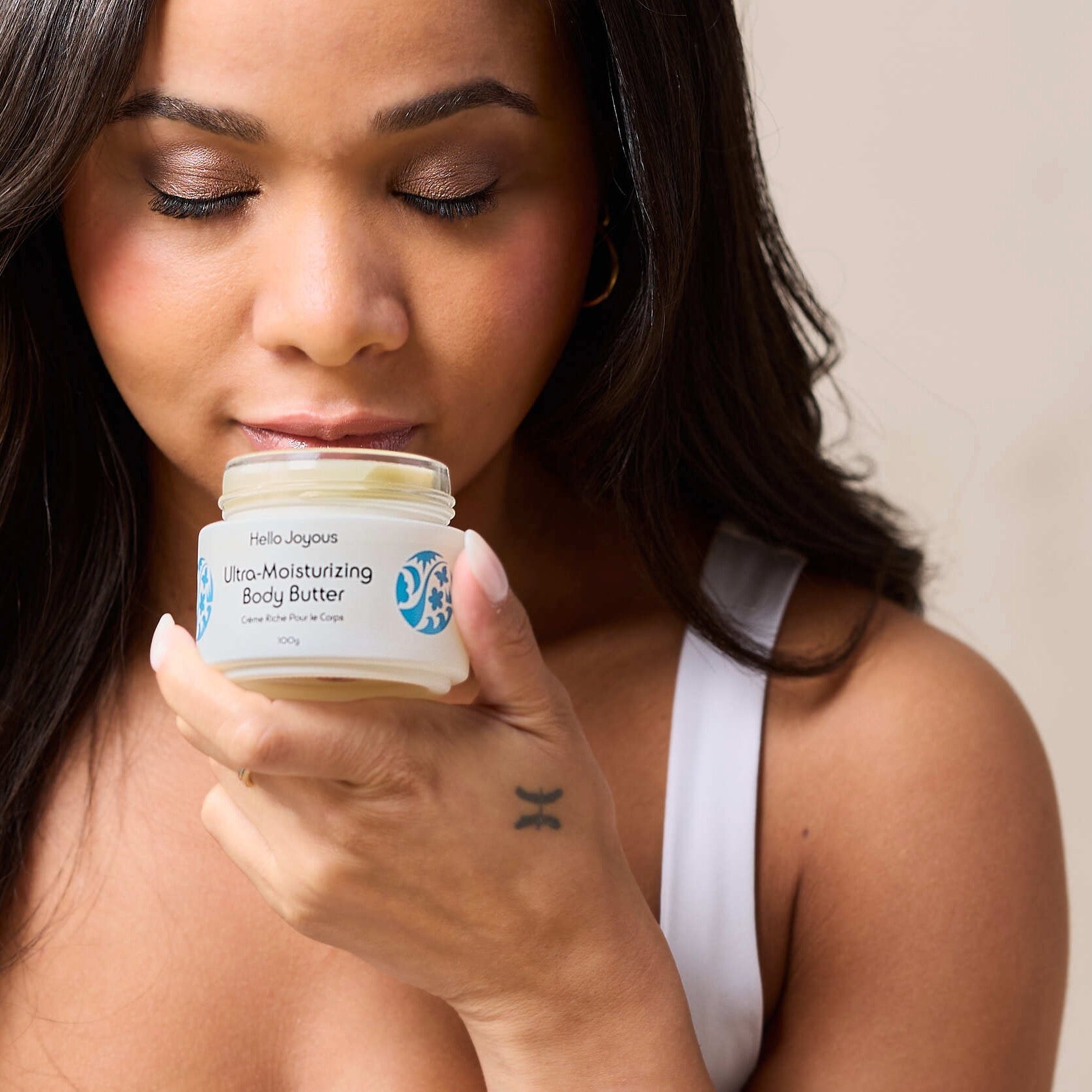
At Hello Joyous, we pride ourselves on creating clean, effective beauty products sourced from organic plants that are free from hormone-disrupting chemicals like phthalates, irritating preservative...
